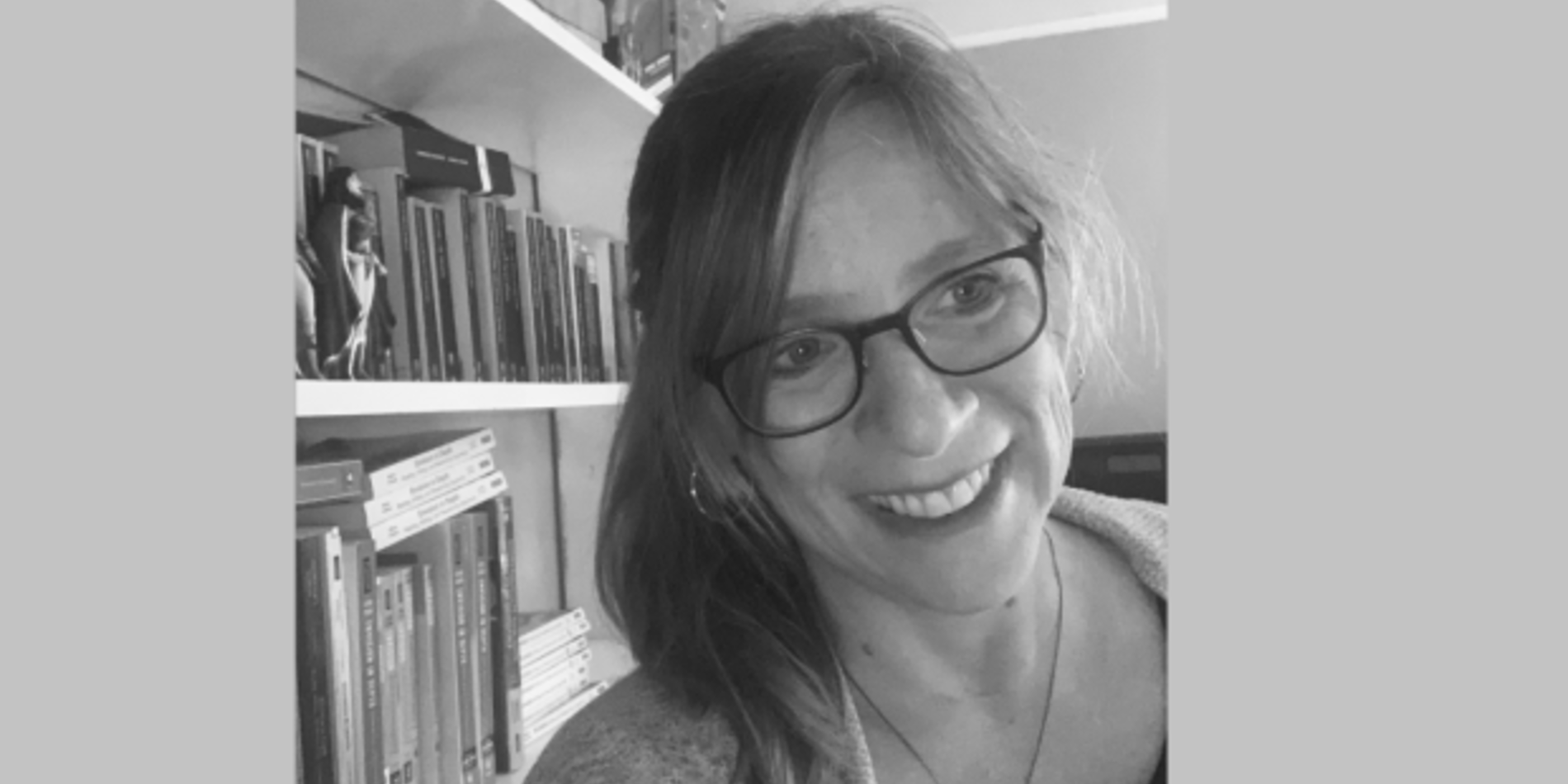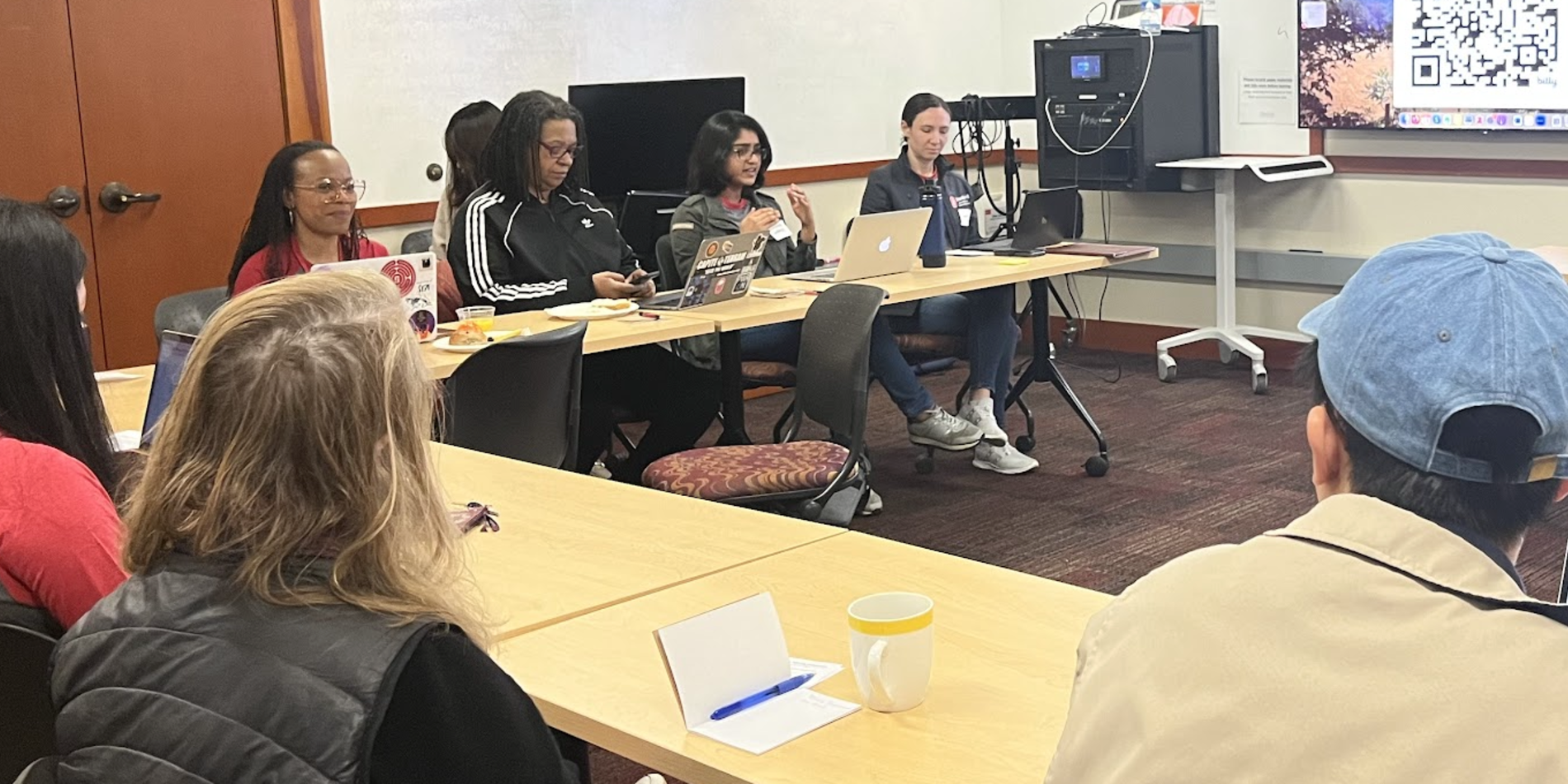It is safe to say that few guest speakers in the past several years have contributed to the PWR goals and ethos as much as Dr. Aja Martinez. As what a late-night television host might call “a friend of the program,” Martinez has spoken about her evolving work on critical race theory and counterstory on several occasions. This quarter we had the pleasure of hosting her once more, this time on our screens, to see an illuminating and inspiring next phase in her counterstory research and practice.
Martinez is currently an Assistant Professor of English at University of North Texas, where she recently moved after teaching as an Assistant Professor of Writing Studies, Rhetoric, and Composition at Syracuse University. The occasion for her visit to our February 2021 Program Meeting was a discussion of her latest book, Counterstory: The Rhetoric and Writing of Critical Race Theory, which in his introduction faculty director Prof. Adam Banks described as “an instant classic that is going to influence the field for years.”
As someone who has been present at Martinez’s multiple addresses to PWR Lecturers, I was struck during her recent Zoom talk at the particular value of seeing such a monumental project across multiple phases of development. Several Lecturers, including Dr. Tessa Brown, commented in the subsequent discussion on the beautiful rhetorical clarity with which she presented key tenets of critical race theory and its connection to counterstory. Through word and visual aides, Martinez was able to turn a notoriously complex topic into a message that was not only understandable but also actionable.
As a fellow scholar I deeply appreciate and take inspiration from her ability to connect theory so directly to pedagogical practices, thus leaving her audience with so many tools that there is little excuse not to analyze our individual classroom norms through the lens of cultural rhetorics, and specifically a more nuanced understanding of race within our discipline.
She began her talk with a confrontation of the frustrating prevalence of power structures that create the need for counterstory. As Martinez recounted,
A student once asked if there is ever a point in which we (minoritized folk) will get to stop justifying the methodological choice of telling our stories? I believe that we’ve all been telling stories all along, but some stories are elevated to the status of theory, scholarship, and literature, while, too often, minoritized perspectives are relegated to marginalized or overlooked ‘Cultural Rhetorics’ methods or genres.
Martinez went on from there to provide a framework for pushing back against dominant narratives that subvert the voices of minoritized folx across rhetorical situations and writing practices, as well as - perhaps most disturbingly - in our own classrooms. Part of what makes her approach so powerful and effective is that it provides us with both idea and practice, with a theoretical depth of understanding that we need in order to responsibly challenge ourselves and our students to employ counterstory in the classroom. As she put it, her research “makes a case for critical race counterstory as a rhetorical research methodology and method.”
Martinez discussed the fascinating work and significant impact of several “counterstory exemplars” -- foundational figures in critical race theory that include Derrick A. Bell, Richard Delgado, and Patricia J. Williams. She explained that these theorists “define critical race methodology as a challenge to “majoritarian” stories or “master narratives” of white privilege.”
This methodology rejects notions of ‘neutral’ research or ‘objective’ research and exposes research that silences and distorts epistemologies of people of color,” she added. “Importantly, critical race methodology recognizes that experiential knowledge of people of color is legitimate and critical to understanding racism that is often well disguised in the rhetoric of normalized structural values and practices.
After crucially establishing the continuing exigency and need for critical race theory by addressing the 45th US president’s “Executive Order on Combating Race and Sex Stereotyping,” Martinez provided the actionable knowledge through eight tenets of Critical Race Theory. These tenets, which she introduced with reference to the work of the aforementioned scholars and other key voices in antiracism, include:
- Permanence of Race and Racism
- Challenge to Dominant Ideologies
- Interest Convergence
- Race as Social Construct
- Intersectionality and Anti-Essentialism
- Interdisciplinarity
- Centrality of Experiential Knowledge and/or Unique Voices of Color
- Commitment to Social Justice
The explanations and discussion presented by Martinez were so rich and intricately-crafted that attempting to encompass them in this article would only do them a disservice. However, PWR instructors and staff wishing to revisit her talk can access the slides and transcript she kindly provided (they can also be found at PWR Canvas>Files>Program Meeting Materials>2021.02.19 Program Meeting).
That said, a portion of the talk that particularly affected my own thinking about antiracist pedagogy and CRT was a wonderfully clarifying overview of Critical Race Methodology, which highlighted that CRT presents “A challenge to ‘majoritarian’ stories or ‘master narratives’ of white privilege, Rejects notions of ‘neutral’ research or ‘objective’ research, Exposes research that silences and distorts epistemologies of people of color, and Recognizes experiential knowledge of people of color is legitimate and critical to understanding racism that is often well disguised in the rhetoric of normalized structural values and practices.”
A couple of days before her remarks at the Program Meeting, Martinez visited a virtual session of Bank’s Winter 2021 course “Race, Ethnicity, and Language: Pedagogical Possibilities.” After brief remarks, she devoted most of her time with the class answering questions from the students. The liveliness of the discussion was made even more interesting by the breadth of backgrounds, experiences, and life stages represented by the students in the class, who ranged from a first-year undergraduate to a fifth-year graduate student and a Stanford staff member.
The questions and comments from these students, some of whom are already parents and teachers, demonstrated the far-reaching applicability of critical race theory and specifically Martinez’s research. One student, an elementary school teacher, expressed her interest in adapting the counterstory methodology for her third grade class. Many undergraduate students, on the other hand, were eager to explore how counterstory could become a part of their own learning experiences in other Stanford classrooms.
As Bank’s course has a focus on language equity and valuing the language practices the students bring to the classroom, Martinez’s work on the multiplicity of discourse practices was a natural and valuable part of their continuing goals to open up views of language and its relationship to power structures and silenced voices.
The struggle for racial justice and equity is multifaceted and ever-present, as demonstrated by the current violence against the Asian American and Pacific Islander community in the Bay Area and beyond and the horrific murders in Georgia this week. While listening to the stories of my own AAPI friends this week and finding ways to act on their behalf, my mind returned to Martinez’s opening remarks, which asked the question many of us have wearily asked time and again: How long? How long do we have to justify this work, when the struggle is a clear and present danger in the everyday lives of ourselves and our loved ones?
These difficult questions resonated vividly as I read through several powerful social media posts this week by internationally renowned cartoonist Gene Luen Yang. In one Instagram post, he shared a series of panels from his debut graphic novel, American Born Chinese, now a classic of the Asian American and immigrant experience for people of all ages and backgrounds. The panels feature vivid, jarring hate speech directed at the Asian-American protagonist and his AAPI friends by fellow children. This graphic novel was published in 2008.
In a subsequent post, Yang presented a series of new panels in which he also asks that question. How long? Rather than watering down his answer here, I encourage you to see the comic he posted for yourself, which draws immense power from its medium and pacing that should be experienced in situ. Yang uses his own hybrid language, his own rhetorical practice, to perform the counterstory #AsiansAreHuman and meet the moment with discourse. You can find it on his Instagram page @geneluenyang.
Certainly it is not easy to transform our own writing and teaching practices to counter master narratives and advance the goals of antiracist pedagogy, especially given the resistance such pedagogy often faces from those who would prefer the comfort of not confronting counternarratives. However, it is due to the work of critical race theorists such as Aja Martinez that we can build up the knowledge, pedagogical planning, and courage to advance the opportunities for silenced and distorted voices to at last be heard on their own terms. Indeed, when it comes to antiracism in life, research, and teaching, there is no “neutral” ground.



